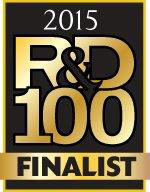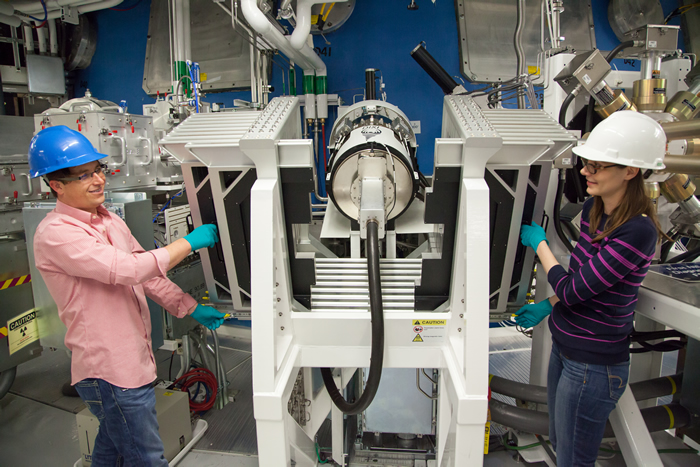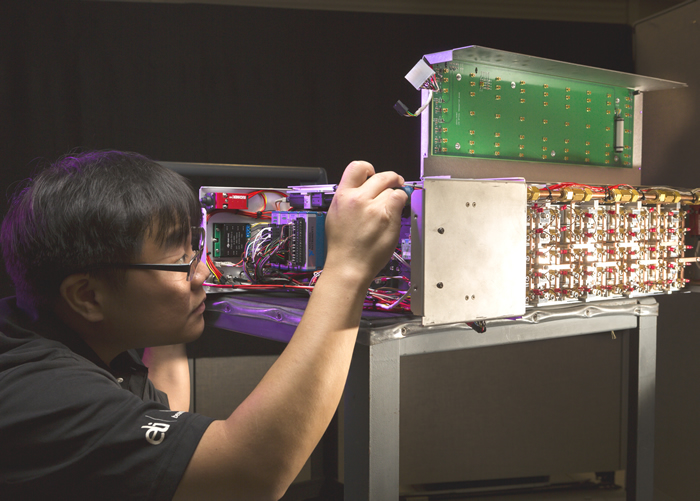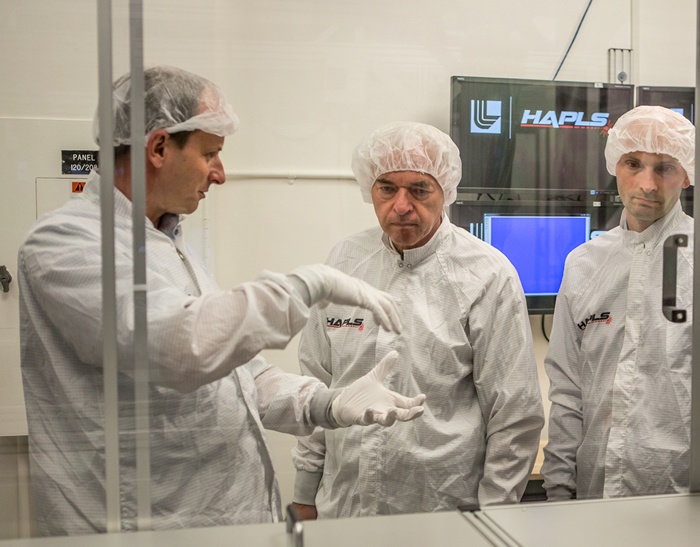Science & Technology - 2015
July
ELI Beamlines Officials Tour HAPLS Project
Two NIF&PS Technologies Named R&D 100 Finalists
Both NIF & Photon Science entries in this year’s R&D 100 competition have been chosen as finalists. They are among six LLNL entries named finalists in a revamped awards process designed to mimic entertainment awards.

Throughout the 53-year history of R&D Magazine’s awards competition, the R&D 100 winners have typically been announced during June or July, with the presentation of the awards during a fall dinner. Under the magazine’s new awards format, more than 300 finalists for this year’s awards were chosen July 22.
The winners will be announced from among the finalists without advance knowledge at the Nov. 13 black-tie dinner at Caesars Palace in Las Vegas, Nevada. The dinner will be part of a two-day R&D 100 Awards and Technology Conference.
“We’ve adopted a new format this year in part because since the R&D 100 awards are often called the ‘Oscars of Invention,’ we wanted to make them a little more like the Oscars with finalists and with the suspense of people learning of winning their awards at the dinner,” said R&D Magazine editor Lindsay Hock.
The NIF&PS finalists are:
Dilation X-ray Imager (DIXI): This NIF diagnostic is the world’s fastest two-dimensional x-ray framing camera, capable of capturing images of NIF implosions at 200 billion frames a second. With 10-fold better temporal resolution than existing cameras, DIXI can survive in environments with 10 times higher neutron backgrounds compared to conventional x-ray cameras. The technology is a finalist in the “market disruptor” product category. LLNL researchers collaborated on this effort with two companies, San Diego-based General Atomics and Kentech Instruments Ltd. of Great Britain. Jay Ayers and Sabrina Nagel are the imager’s principal investigators.
 Jay Ayers and Sabrina Nagel with DIXI outside the NIF Target Chamber. Credit: Jason Laurea
Jay Ayers and Sabrina Nagel with DIXI outside the NIF Target Chamber. Credit: Jason Laurea The High-Power Intelligent Laser Diode System (HILADS): This laser system employs advances in laser diodes and electrical drivers to achieve two-to-three-fold improvements in peak output power and intensity over existing technology, in a 10 times more compact form that can scale to even larger arrays and power levels. The technology, a key component of the High Repetition Rate Advanced Petawatt Laser System (HAPLS) being developed by LLNL for the European Union’s Extreme Light Infrastructure Beamlines (ELI-Beamlines) facility in the Czech Republic, is a finalist in the information technology/electrical category. LLNL collaborated on the laser system with Lasertel of Tucson, Arizona. The project’s principal investigator is Bob Deri.
 HAPLS Power Conditioning Team member Ed Koh adjusts the HILADS electrical drivers. Credit: Damien Jemison
HAPLS Power Conditioning Team member Ed Koh adjusts the HILADS electrical drivers. Credit: Damien Jemison ELI Beamlines Officials Tour HAPLS Project
Jan Ridky, director of the Institute of Physics of the Czech Republic’s Academy of Sciences, and Roman Hvezda, deputy director for projects of operational programs and ELI Beamlines project manager, visited LLNL in mid-July for an update and tour of the Laboratory’s High-Repetition-Rate Advanced Petawatt Laser System (HAPLS) project.
Ridky and Hvezda visited the Laboratory on behalf of the European Union’s Extreme Light Infrastructure Beamlines facility (ELI-Beamlines), now under construction near Prague in the Czech Republic. HAPLS, a vital component of the Beamlines facility, is being built and commissioned at LLNL. It will be installed and integrated into the ELI Beamlines facility in 2017.
 HAPLS Program Director Constantin Haefner (left) briefs Jan Ridky and Roman Hvezda on the status of the HAPLS project. (Credit: Jason Laurea)
HAPLS Program Director Constantin Haefner (left) briefs Jan Ridky and Roman Hvezda on the status of the HAPLS project. (Credit: Jason Laurea) HAPLS is designed to be capable of generating peak powers greater than one petawatt (one quadrillion watts, or 1015) at a repetition rate of 10 Hz, with each pulse lasting 30 femtoseconds (30 quadrillionths of a second). This very high repetition rate will be a major advancement over current petawatt system technologies.
During their visit, Ridky and Hvezda toured NIF optics and target fabrication facilities and met with Lab and NIF & Photon Science senior management to discuss potential areas of future collaboration, such as short-pulse beam transport, optics and materials, and experimental facility user communities.




